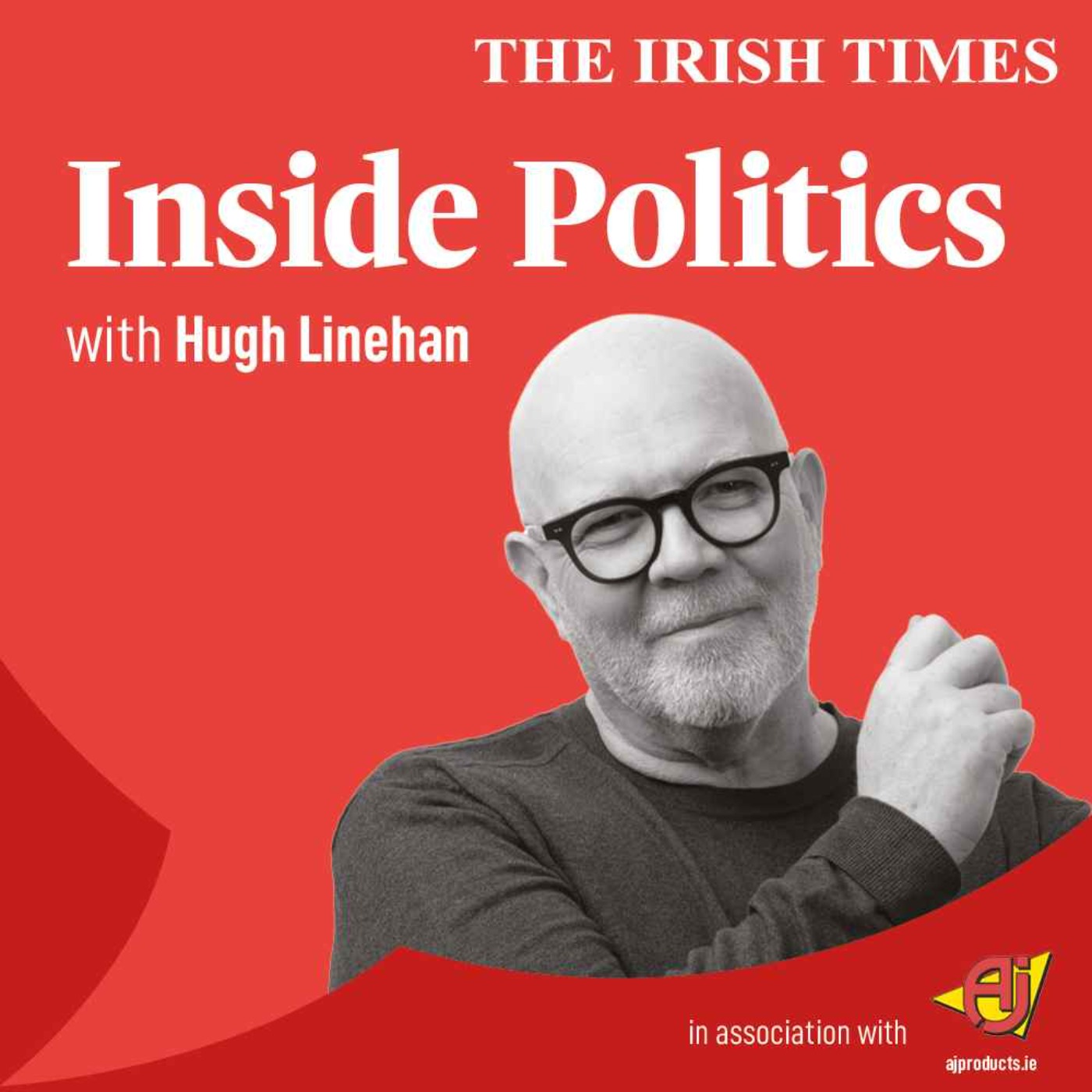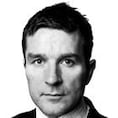In 2011, Fianna Fáil had come out of the party’s worst election in its long history and had no appetite to run its own candidate in the presidential election that year.
Somebody who knew Gay Byrne took it upon themselves to approach the former Late Late Show host (then 77 years old) to see if he might be interested in a tilt at the Áras. It led to serious discussions, including a conversation with party leader Micheál Martin. If Byrne agreed to stand, it would be a considerable coup for the party. Here was a bona fide celebrity candidate who could command widespread support.
When word of the talks got out, Byrne was immediately installed as odds-on favourite, even though he had not fully made his mind up. Then, in comments he made at a public event, he said Ireland was being “run by mad people in Brussels”.
Unsurprisingly, that caused a big stir. Now, Byrne was facing intense scrutiny by the media on all kinds of issues and views. Within 48 hours he was out of the race, saying it was more trouble than it was worth.
RM Block
Fourteen years – and two presidential terms – later, Byrne’s protegee, Joe Duffy, is being mentioned in the same breath at the same period of the electoral cycle. When he retired from Liveline last month, after 26 years at the helm, Duffy gave a tongue-in-cheek response when asked if he would be a candidate.
“I was president of Trinity students’ union; I still have the posters. But my face has changed a lot. Maybe my intellect isn’t as strong as it used to be,” he said.
There was little that could be taken from his comments to suggest a definite interest on Duffy’s part. Nonetheless, he did not categorically rule himself out. That was enough to make him something of a talking point in Leinster House this week, with the broadcaster’s name being linked with Fianna Fáil, and also with Labour. “If he stood tomorrow, he’d win,” said a Fianna Fáil TD, one of about half a dozen who mentioned his name to me as a possible contender.
Attempts to reach Duffy this week were not successful. With no further comment from him, or from any party, and no confirmation of any contacts, his status at the moment is that of yet another name being thrown into the mix of “maybes”, along with former WHO deputy director Dr Mike Ryan, Ireland’s Ambassador to the USA Geraldine Byrne-Nason, and Irish Times columnist Fintan O’Toole.

The big three political parties all insist, when asked, it is too early to predict the composition of the field. A senior figure in Fianna Fáil points out that the last time it contested a presidential election, in 1997, its candidate Mary McAleese was not selected until September 19th, just six weeks before polling day.
“Mary McAleese was certainly not a household name back then. Her success depended entirely on how successful that short campaign would be in elevating her standing among the public,” said the source.
“It’s too early in July. Our approach will be measured and not knee-jerk.”
Forward momentum in this campaign has hit the doldrums in recent weeks. The Opposition party leaders (all representing left and left-of-centre parties) held informal talks earlier this year with a view to finding an agreed candidate. Nothing has come of them as yet and all that urgency has faded.
There have been no meetings lately, though the parties plan to reconvene before the summer recess to continue the search.
With all becalmed, there has been inertia. Last week, one of the people who might be seen as an agreed candidate of the left, Senator Frances Black, said she was ruling herself out “99.5 per cent”. No party has approached her to date, she confirmed. The subliminal message was that her patience had run out.
There is another undercurrent that might explain the dearth of people coming forward. That is the view that presidential campaigns have become personalised and brutal, which has a chilling effect on prospective candidates.
Labour TD Alan Kelly certainly thinks so. “There are people who would make a very good president of Ireland, very rounded people, with huge capacity and integrity. It’s become clear to me that very few of them would ever put themselves through this campaign, as they’ve seen what has happened in the past. This is a real issue for society,” he says.
He recalls the bruising experience of Labour candidate Adi Roche in 1997, in which she and her family were the subject of a smear campaign. Dana Rosemary Scallon has talked in recent weeks to Oliver Callan on RTÉ of how traumatic the 2011 campaign was for her.

Why does Ireland's presidential race still have no one at the starting line?
Gavin Duffy was a candidate in 2018 and found himself under similar unyielding scrutiny. In his case, it was in connection with his involvement in a crash 40 years earlier in which a young woman was seriously injured. Then 18, he was convicted for careless driving and for being uninsured.
Duffy says he was realistic enough to know before then that he was not a contender. The incident being brought up, however, was difficult to respond to from both a personal and a campaign perspective.
Speaking not of his own candidacy but in general terms, he says: “It’s not an election, it’s a process of elimination.
“Something is spun in a way to appear like a serious character flaw, and therefore confidence is undermined. The candidate drops in the polls, and eventually the last man or woman standing is elected.”
Comparing 2018 and 2025 is not a like-for-like exercise, Duffy says. Back then, President Michael D Higgins was seeking reelection. Sinn Féin was the only party that fielded a candidate. The rest were independents.
“This election is very different. We are going to get a higher calibre of proven, established politicians running with the backing of their political parties.”
In other words, it will be a more serious, less visceral contest. Right now, there are signs that bigger parties are finally beginning to swing into action.
Fine Gael will open its nominations on Monday and close on July 15th. If there is more than one candidate, the party will hold hustings in late July and conduct a postal ballot in August, using its electoral college system. It is widely expected that former EU commissioner Mairéad McGuinness and sitting MEP Seán Kelly will seek nominations.
In a letter to members, Fine Gael general secretary John Carroll set out the timeline if there is a bout: “The result will be announced, and the candidate ratified, at an event in early September.”
By that time, Sinn Féin and Fianna Fáil will be close to reaching their decisions. Sinn Féin consulted widely with its membership last month on its best approach.
A spokesman said this week the process will conclude in early autumn and added that a no-candidate scenario was not envisaged. Essentially that means it will have its own candidate, or support someone whose political space is contiguous to Sinn Féin’s. Finding the ideal candidate might prove a challenge, though.
The same questions face Fianna Fáil. Talking to its TDs and Senators in Leinster House on Wednesday and Thursday, most were strongly of the view that the party should field a candidate.
The last Fianna Fáil candidate was McAleese 28 years ago. “We are the biggest party. We can’t exclude ourselves in this election for three decades,” said a veteran TD on Thursday.
A few names have been mentioned, including Bertie Ahern, Cynthia Ní Mhurchú and Mary Hanafin.
On Thursday, former minister of State, and head of Unicef Ireland, Peter Power, was on manoeuvres around Leinster House, gauging the support levels of colleagues. He is said to be interested in running.
The party’s nomination process is a straight vote of its TDs and Senators. All who spoke to The Irish Times said that – in realpolitik – Taoiseach Micheál Martin would effectively make the final decision on running a candidate, and probably on the identity of the candidate.
In the past, those seeking nominations were often serving TDs. No such figure has emerged this time.
The feedback from senior party figures is that for it to contest the election, it will need a candidate of status who is capable of winning. There is a sense that such a candidate has yet to be identified.
Could there be a dark horse? Some independents will succeed in getting a nomination and Duffy can see a serious contender among them.
“Somebody could emerge from left field who can appeal to people under 35 who don’t vote [along party lines],” he said.
“I think there is a lot of angst about housing. If somebody can play into that stream, they could do very well.”
He and others believe there will be four to six candidates - one each from Fianna Fáil, Fine Gael and Sinn Féin, a candidate representing smaller left parties, and one or two independents, who have secured their nominations by getting the backing of four local authorities.























